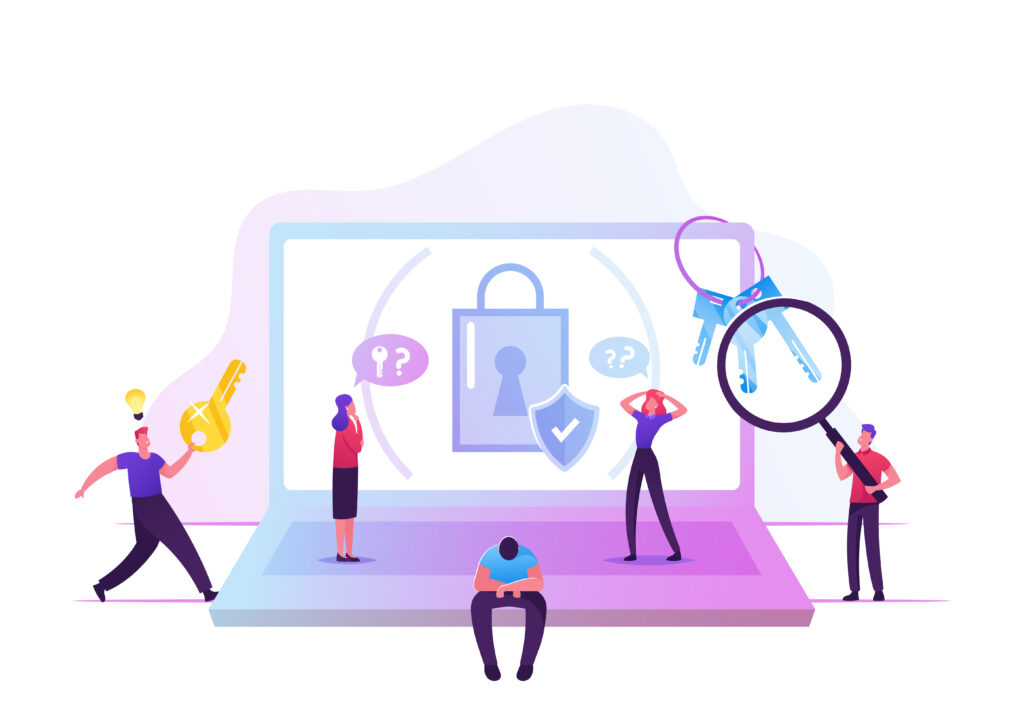The many cases for single sign-on


Research from NordPass (2020) reports that the average person has 100 passwords, a number that has increased by 25% in a single year. No wonder something as simple as accessing your most-used platform can be so time-consuming.
The good news is, it doesn’t have to be.

We’ve released single sign-on (SSO) for Dotdigital. So now you can do away with those Slack memos you sent yourself (no, really), the numerous Dropbox Paper documents you’ve stored your passwords in (come on, admit it), and all that countless effort it takes to get into your most valuable business systems, one of which no doubt is your marketing platform.
Why SSO?
Besides relieving a lot of frustration on the users’ part, single sign-on brings a broader set of benefits to businesses. For one, it fosters collaboration. Marketing platforms play a greater role in cross-departmental collaboration than ever. Chat is a great acquisition tool for marketers, but typically requires sales users to log-in. Customer and persona reporting are instrumental to driving effective marketing programs, and can provide valuable insight for online visual merchandisers and ecommerce managers too.
Or perhaps you want to send transactional SMS and your dev team urgently needs access to your API credentials. Some such teammates won’t need access every day, and so expecting them to remember another log-in when you want them to use your hard-fought insights, or make something happen for you, can seem like a tall ask and hinders collaboration.
But those are just my takes. SSO presents a host of different benefits to businesses. Understanding these from a perspective other than your own is going to help you drive the internal conversation and make it happen. I spoke to some of our own experts on the matter to find out more…
SSO for privacy and cybersecurity
With the ever-increasing legislation around privacy and cybersecurity, SSO has become a hot topic at the board table. Many organizations, including dotdigital, align with internationally recognized standards such as ISO 27001, to deploy security best practices. For stretched internal IT teams that means having to deploy security measures and policies to help protect against emerging threats.
Steve Shaw, Chief Technology Officer at dotdigital explains: “Policies and procedures have to be tight and followed to keep bad actors at bay. Having strong password policies, policies around password rotation, two-factor authentication, and account lockout across all your technology are no longer nice to have but a must to protect Personal Identifiable Information (PII). Implementing this across a sprawling technical estate, that increases daily with the advent of SaaS & cloud, can be a huge challenge.”
This is why single sign-on is so important concludes Steve, “It enables your SaaS applications to tie into your organization’s Identity Management Platform (IdP), helps to control the password strength, two-factor authentication requirements, and account lock-outs, all from a single location.
“Imagine if one of your employee’s email accounts has been compromised. How many SaaS applications would the attacker now have access to? With SSO you can block access to that employee’s account by disabling it on your own IdP.

“With the introduction of SSO for Dotdigital, your organization can benefit by reducing IT and Security team administration overheads and ‘time to act’ by connecting Dotdigital to your IdP using the OpenID protocol, which enables IdPs such as Azure Active Directory, Okta and Google’s IdP platform.”
SSO: security vs. usability
Further to this, Dotdigital Head of Information Security, Yousif Rajah, provides this useful analogy: “Whenever we talk about bolstering the security of something, there is often a difficult trade-off between security and usability. In the physical world, you’d ideally like to walk up to your house and simply push open the door. But for most of us, the level of risk dictates that we need to add a level of security to protect the things we care about; which normally takes the form of one or two locks. How about 10 locks? Great Security; awful usability.
“In the online world, single sign-on (SSO) is one of those rare controls where those trade-offs don’t have to be so binary. End users can have a much more seamless experience, while IT, Security, and Governance teams can maintain the level of control and visibility they require. It really is a win-win.”
Win-Win(-Win) with SSO
With SSO, your company controls the rules around access – not the platform you are logging in to; resulting in:
- Productivity gains: you use the same password across all of your SSO-enabled platforms; enabling you and key collaborators to access the tools you need with efficiency.
- Reduced overheads: you’ll have fewer prompts to enter a username and password when logging in to SSO-enabled Apps; fewer tickets for your IT team to tend to.
- Best practice: businesses can turn to their central IdP to swiftly manage account access for all their SSO-enabled applications; reducing the risk of bad actors accessing sensitive customer data.
Get in touch to find out more about single sign-on.


